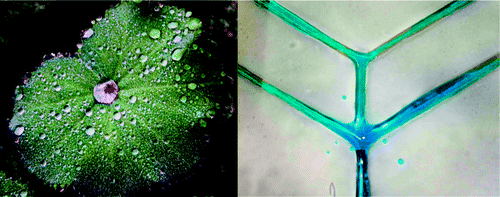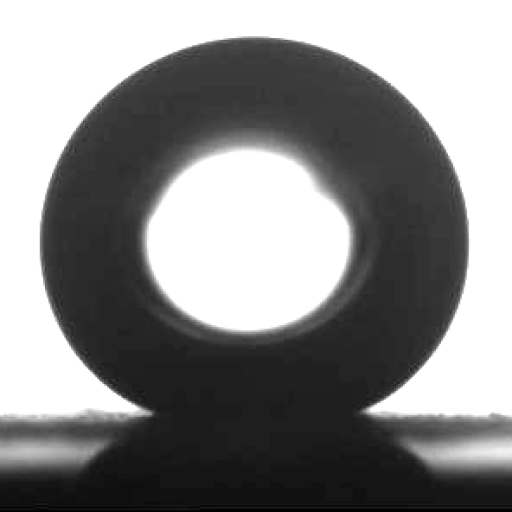Artificial Leaves

Plants such as Lady’s Mantle, Mexican Hens, Euphorbia and Lupin retain water droplets at the base of their leaves. The leaves are superhydrophobic, but this on its own would result in water droplets rolling off the leaf rather than being retained. It is clear that the topography of the leaves is also important for water retention. Water can be retained by having uward-pointing leaves that channel water to the stem by gravity, but when the leaves are superhydrophobic, this can result in droplets bursting when they hit the stem junction. Some plants have a patch of high contact angle hysteresis surface to help trap water droplets.
Researchers have made artificial surfaces that channel water using a combination of superhydrophobic and superhydrophilic surfaces, without any geometrical confinement. They can be used to collect and direct water with a simple chemical pattern on a rough surface, in a similar way to water motion is controlled on the surfaces of certain leaves.
Publication
Learning from Superhydrophobic Plants: The Use of Hydrophilic Areas on Superhydrophobic Surfaces for Droplet Control, N.J. Shirtcliffe, G. McHale and M.I. Newton, Langmuir 25 (2009), 14121-14128
